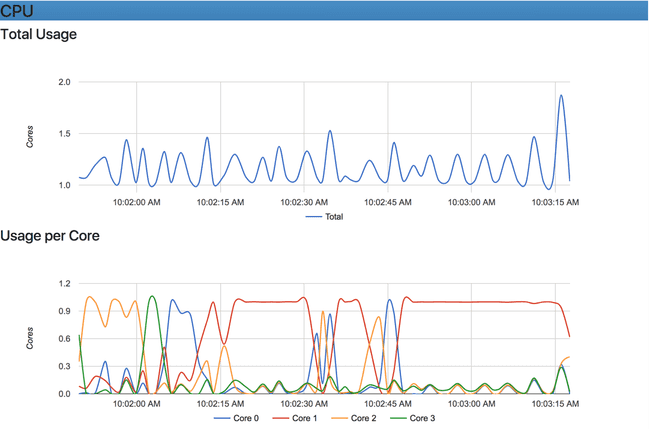Docker
April 10, 2019install
https://allysonjulian.com/posts/setting-up-docker-with-xhyve/
https://docs.docker.com/v17.12/docker-for-mac/install/#download-docker-for-mac
brew update
brew install docker docker-compose docker-machine
xhyve
deprecated, use hyperkit
docker-machine-driver-xhyve
docker-machine env dev
hyperkit
https://github.com/kubernetes/minikube/blob/master/docs/drivers.md#hyperkit-driver
curl -LO https://storage.googleapis.com/minikube/releases/latest/docker-machine-driver-hyperkit \
&& sudo install -o root -g wheel -m 4755 docker-machine-driver-hyperkit /usr/local/bin/
or
docker-machine-driver-hyperkit
docker-machine create dev --driver hyperkit
Docker
docker exec -it vibrant_bell sh
run shell on container vibrant_bell
Healthchecks
documentation: https://docs.docker.com/engine/reference/builder/#healthcheck
https://ryaneschinger.com/blog/using-docker-native-health-checks/
health check samples: https://github.com/docker-library/healthcheck
Startup dependencies
https://docs.docker.com/compose/startup-order/
compose / stack
compose is legacy
links are legacy.
docker container run --name api-gateway --rm --link config-service:ali-config-service api-gateway:latest
start stack
docker stack deploy -c docker-compose.yml javelin
ENV vars
how entry points work: https://stackoverflow.com/questions/41512237/how-to-execute-a-shell-command-before-the-entrypoint-via-the-dockerfile
vars in dockerfile: https://stackoverflow.com/questions/19537645/get-environment-variable-value-in-dockerfile
environment replacement doc: https://docs.docker.com/engine/reference/builder/#environment-replacement
how to run command to set env var
-
Create dockerrun.sh script to set as entry point with the following
GATEWAY=$(ip route show 0.0.0.0/0 dev eth0 | cut -d\ -f3) SPRING_CONFIG_URI=http://$GATEWAY:8888 java $JAVA_OPTS -DSPRING_CONFIG_URI=$SPRING_CONFIG_URI -Djava.security.egd=file:/dev/./urandom -Dserver.port=8081 -jar /app.jar -
edit Dockerfile
FROM openjdk:8-jdk-alpine VOLUME /tmp EXPOSE 8081 COPY target/dockerrun.sh / ADD target/api-gateway.jar app.jar ENV JAVA_OPTS="" ENTRYPOINT exec sh ./dockerrun.sh
Networking
get container ip
hostname -i
get container gateway
$(ip route show 0.0.0.0/0 dev eth0 | cut -d\ -f3)
or
ip route|awk '/default/ { print $3 }'
** Use docker compose/stacks to network containers. old way was link. using the gateway address will also do it.
tutorials
getting started for java: https://github.com/docker/labs/tree/master/developer-tools/java/
getting started for spring boot: https://spring.io/guides/gs/spring-boot-docker/
host multiple websites on single host docker: https://blog.florianlopes.io/host-multiple-websites-on-single-host-docker/
nginx template vars: https://docs.docker.com/samples/library/nginx/#using-environment-variables-in-nginx-configuration
phantomjs
http://fabiorehm.com/blog/2015/07/22/building-a-minimum-viable-phantomjs-2-docker-image/
alpine linux won't build phantom:
https://github.com/Overbryd/docker-phantomjs-alpine
Playground
Volumes
- mount points are owned by root, may have implications when mounting user home
- create a VOLUME and run ls -la /home
- add a volume at run to /home/username and run ls -la /home to see diff
- paths on host must be absolute.
- non-existent paths are created
Mac OS
https://docs.docker.com/docker-for-mac/osxfs/#namespaces
Alpine linux
docs: https://docs.docker.com/samples/library/alpine/
creating users: https://github.com/mhart/alpine-node/issues/48
RUN addgroup -g 1000 -S username && \
adduser -u 1000 -S username -G username
montoring
http://fuzzyblog.io/blog/docker/2017/06/25/docker-tutorial-understanding-container-memory-usage.html
https://dzone.com/articles/monitoring-docker-containers-docker-stats-cadvisor-1 - breakdown of four types of monitoring including: stats, cadvisor, remote api, and universal control plane
docker stats
is a live 1sec view that streams
docker stats
docker remote api
https://docs.docker.com/develop/sdk/ - sdk for interacting
https://docs.docker.com/engine/api/v1.37/ - api docs
using cAdvisor
This will run in a docker container and expose a web view at: localhost:8080
#!/usr/bin/env bash
docker run -d --name=cadvisor \
-p 8081:8080 \
--volume=/var/run:/var/run:rw \
--volume=/sys:/sys:ro \
--volume=/var/lib/docker/:/var/lib/docker:ro \
google/cadvisor:latest
Gives you host and container metrics such as:

Can be used with other tools for storage and retrieval. docs: https://github.com/google/cadvisor/blob/master/docs/storage/README.md
Caching/Layers
https://thenewstack.io/understanding-the-docker-cache-for-faster-builds/
https://docs.docker.com/develop/develop-images/dockerfile_best-practices/#run
brute force: –no-cache during build
use multi-stage builds and separate layers correctly
fix terminal size
fix issue where terminal has wierd wraps
docker exec -e COLUMNS="`tput cols`" -e LINES="`tput lines`" -ti mycontainer bash
interactive experimenting
run an alipine linux container in interactive shell
docker run -it alpine:3.9 /bin/bash